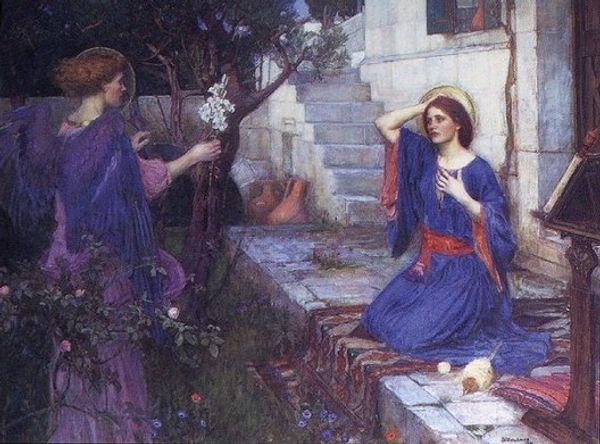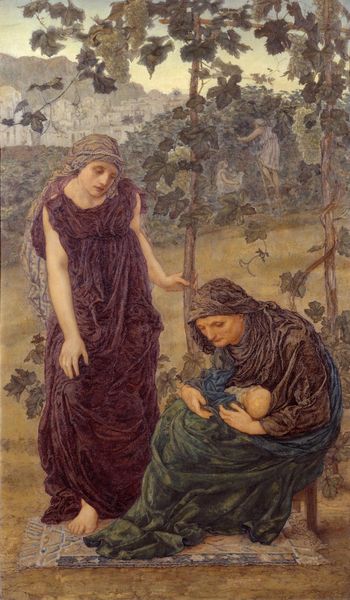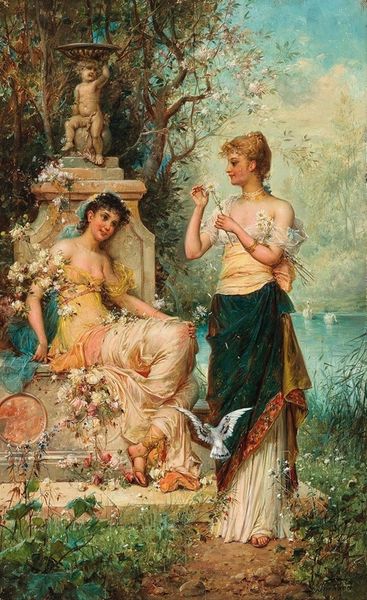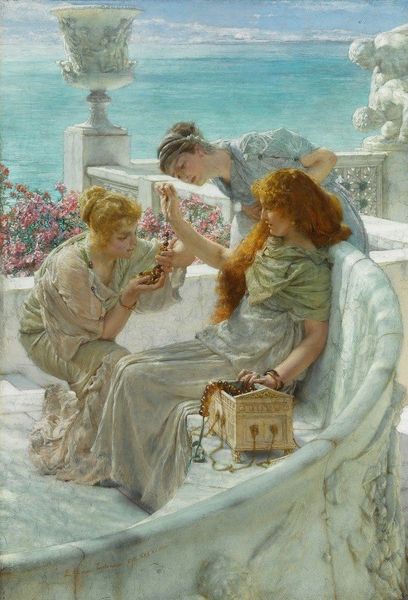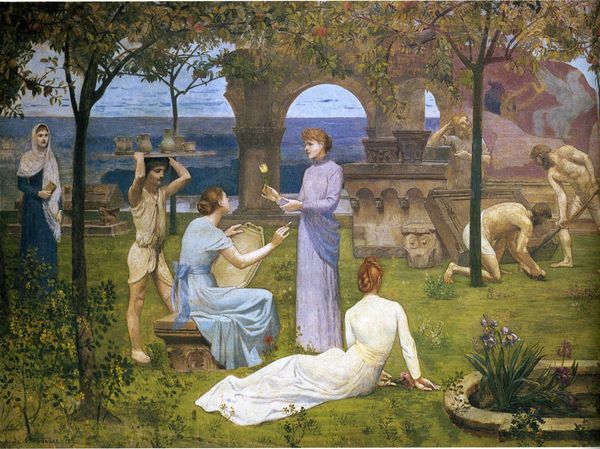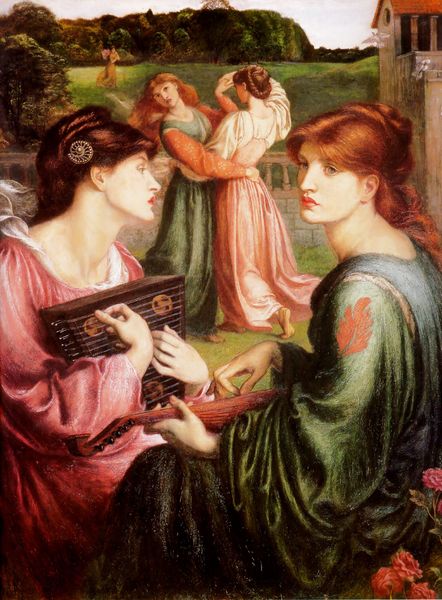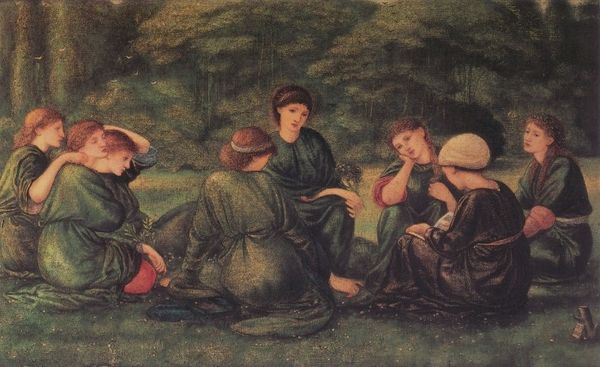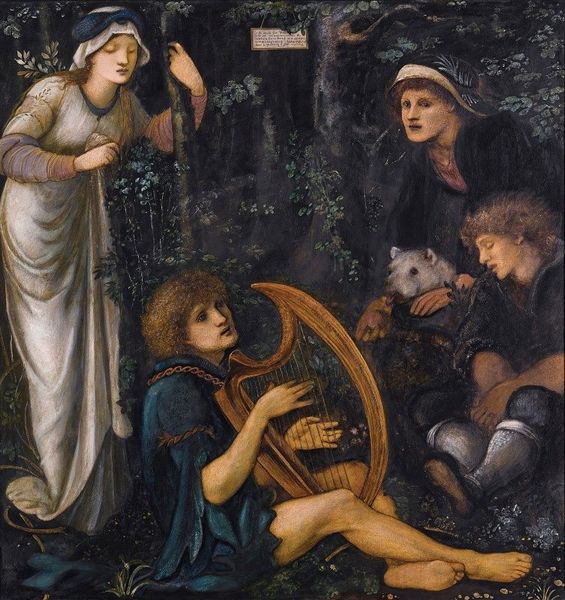
Copyright: Public domain
Curator: Dante Gabriel Rossetti created this oil painting titled "Dante's Vision of Rachel and Leah" in 1855. It's currently housed here at the Tate Modern. What strikes you first about it? Editor: There’s an overwhelming sense of stillness, isn’t there? The composition is vertically oriented, and it is dominated by the figures in the foreground. The light feels carefully modulated. Curator: Absolutely. Consider how Rossetti constructs the pictorial space through a careful arrangement of color and form. The positioning of the figures, almost symmetrical, creates a powerful visual anchor, drawing us into the allegorical narrative. How does that structure reinforce meaning? Editor: Well, these figures, of course, are characters extracted from Dante’s "Purgatorio." Rachel represents the active life, Leah, the contemplative one. Their placement beside the well certainly isn’t accidental. The well as a source of both sustenance and reflection is significant. Notice how Rossetti's choice of clothing in muted purples and greens further separates them? Curator: Exactly. And what's more, there’s a tension set up in their gazes. Rachel looks almost to a future or beyond and Leah in deference. This careful staging underscores a philosophical inquiry, a dialectic within Dante's spiritual journey. Note that their poses, these gestures… they function almost like allegorical script. Editor: Beyond Dante’s poetry though, Rossetti himself had intense feelings that might bleed into his works, personal losses, romantic affairs. How do you account for how this might skew our reading of this canvas? Can this composition even truly stand separate of biography? Curator: That context shapes the painting's reception. However, we can analyze it separately, using a formalism of shape and light to deconstruct, and perhaps reveal what a society would understand. The figures in the foreground, these careful formal properties, establish and reveal thematic connections even divorced of their temporal conditions. Editor: Yet that denies the painting its purpose as social artifact, born from and commenting on its present. We can see here not just formal qualities, but anxieties that inform Victorian England, religious contemplation mixed with secular anxieties. Curator: A balance then between the universal language of form and the specifics of history, each viewpoint illuminating facets of this quietly compelling work. Editor: Indeed. Considering the history behind this artwork, one may not see the symbolism so readily. This reminds us the vital connections among life, art, and the interpretation between the two.
Comments
No comments
Be the first to comment and join the conversation on the ultimate creative platform.

